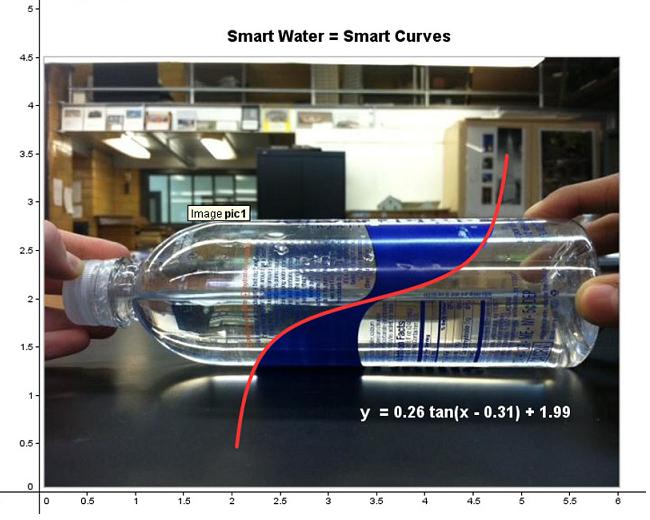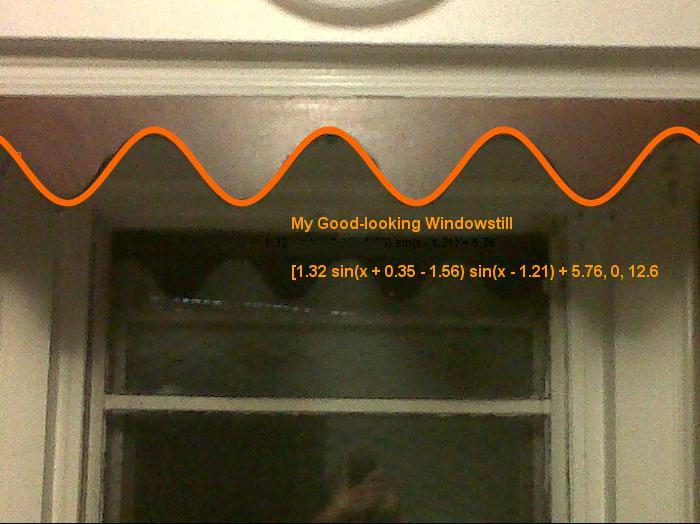All these snow curves seem fractal to me.
Appreciation Art Teaching Technology
Math and Art: Curvefitting With Geogebra
Here is some student work from a recent project I conducted on fitting curves to images in Geogebra. The details of the assignment can be found here, and more examples of student work can be seen on my Facebook page.
Students were asked to find pictures and use Geogebra to fit trigonometric curves to the images using transformations. Here are some of the results.
Smart Water = Smart Curves
My Good-Looking Windowsill
Sine of Camel Humps
Overall, I was really impressed with the creativity the students showed, and their facility with fitting these curves to the forms! A mathematical and artistic success in my book.
Related Posts
Application Geometry Photography
Math and Art: Knitting the Plane
As opposed to tiling the plane, here’s knitting the plane. Or, the fence.
As you can see, they’ve still got a ways to go!
And this isn’t the first example of mathematical knitting I’ve seen: check out this knitted Klein bottle!
Application Geometry
Math and Art: Math and Computer Animation
 This is a clear, concise, and fascinating overview of how some very advanced mathematical ideas are making their way into 3-D animation.
This is a clear, concise, and fascinating overview of how some very advanced mathematical ideas are making their way into 3-D animation.
http://www1.ams.org/samplings/feature-column/fcarc-harmonic
Here’s the basic setup. In order to efficiently model a character, you approximate it with a frame that is built around a few important points. To move the character, you focus on moving just those points that define the frame. Thus, moving the character from point A to point B boils down to understanding where those handful of crucial points go.
The tricky part is figuring out a way to smoothly bring all those in-between points along for the ride, and that’s where the math comes in. The secret is to think of those in-between points as averages of the points that define the frame. The article explains how barycentric coordinates, harmonic functions. and a surprising amount of calculus are being used to pull off this movie magic!






